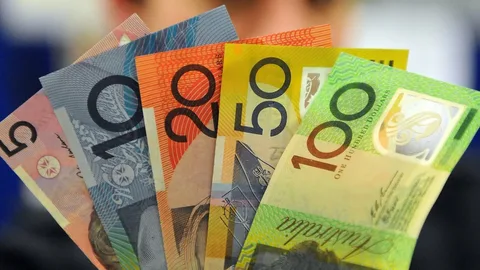Dollar to PKR
The exchange rate between the US Dollar (USD) and the Pakistani Rupee (PKR) has been closely monitored in recent years. This relationship plays a crucial role in determining Pakistan’s economic stability and influences various sectors, from imports to exports. Due to economic fluctuations, the dollar to PKR rate has been subjected to frequent changes, making it a vital topic for understanding financial dynamics in Pakistan.
What Influences the Dollar to PKR Exchange Rate?
Several factors have been observed to influence the dollar-to-PKR exchange rate. Economic indicators, such as inflation rates, foreign reserves, and trade deficits, are often cited as the primary reasons. For instance, when inflation in Pakistan rises, the purchasing power of the PKR decreases, which has led to a higher exchange rate.
Additionally, global events have also been seen to play a role. For example, changes in US Federal Reserve policies or international oil prices have directly impacted the value of the rupee. A strong US dollar tends to weaken emerging market currencies, including the PKR.
Moreover, foreign remittances, which are a significant source of income for Pakistan, have also been noted to affect the exchange rate. Higher remittances usually lead to increased availability of foreign currency, stabilizing the dollar-to-PKR rate.
The Role of Government Policies
Government decisions and monetary policies have been found to be essential in maintaining the dollar-to-PKR exchange rate. For instance, when subsidies on imports are reduced or tariffs are increased, the demand for the dollar tends to decline, which stabilizes the PKR.
In addition, interventions by the State Bank of Pakistan (SBP) have often been undertaken to manage exchange rate volatility. Currency reserves are frequently utilized to inject liquidity into the market, ensuring that abrupt changes in the rate are controlled. However, these measures have only provided temporary relief in many cases, as structural economic issues need to be addressed for long-term stability.
Why Do Fluctuations Occur Frequently?
Fluctuations in the dollar-to-PKR exchange rate have been observed frequently, primarily due to Pakistan’s reliance on imports. Since the country imports a substantial portion of its oil, machinery, and other essential goods, a significant amount of foreign exchange is utilized. As a result, the PKR has been subjected to depreciation, especially during times of global economic instability.
Furthermore, political uncertainties in the country have also contributed to the instability of the PKR. Investors have often hesitated to bring in foreign investments, which has further weakened the currency.
It has also been noted that speculative trading in the currency market has played a role in causing abrupt fluctuations. Speculators often take advantage of economic uncertainty, which results in rapid changes in the exchange rate.
The Impact of Exchange Rate on Everyday Life
The dollar-to-PKR exchange rate has been observed to affect multiple aspects of life in Pakistan. For instance, when the rupee weakens, the cost of imported goods increases significantly. Items such as fuel, electronics, and even basic commodities have become more expensive due to a high dollar-to-PKR rate.
Similarly, industries that rely on imported raw materials, such as the automobile and textile sectors, have faced higher production costs. This has, in turn, resulted in increased prices for consumers.
On the other hand, exports have benefited from a weaker rupee, as Pakistani goods become more affordable in international markets. However, these gains have often been offset by rising inflation, which has negatively affected local businesses and households.
How Can Stability Be Achieved?
Achieving stability in the dollar-to-PKR exchange rate has been suggested as a long-term goal for Pakistan. Structural reforms in key economic sectors, such as energy and agriculture, have been proposed to reduce reliance on imports. By increasing local production, the demand for foreign exchange can be minimized.
Furthermore, diversification of export products and markets has been identified as a potential solution. A broader export base would not only bring in more foreign currency but also reduce the impact of external shocks on the economy.
It has also been recommended that fiscal discipline and prudent monetary policies be adopted to strengthen the economy. Ensuring political stability and improving the ease of doing business are additional factors that could encourage foreign investments, ultimately stabilizing the PKR.
Pound to PKR
The exchange rate between the British Pound (GBP) and the Pakistani Rupee (PKR) has been considered a significant indicator of Pakistan’s financial health. Over the years, this rate has experienced frequent fluctuations, driven by a range of economic and global factors. These changes have not only impacted the nation’s economy but also affected individuals dealing with trade, remittances, and overseas education. To understand why the pound to PKR rate fluctuates and its broader implications, a closer look must be taken.
Conclusion
The dollar-to-PKR exchange rate has been a focal point of Pakistan’s economic discussions. While several factors, such as inflation, global events, and government policies, have influenced this rate, frequent fluctuations have posed challenges for the country’s economy. The impact has been felt across various sectors, affecting both businesses and consumers.

